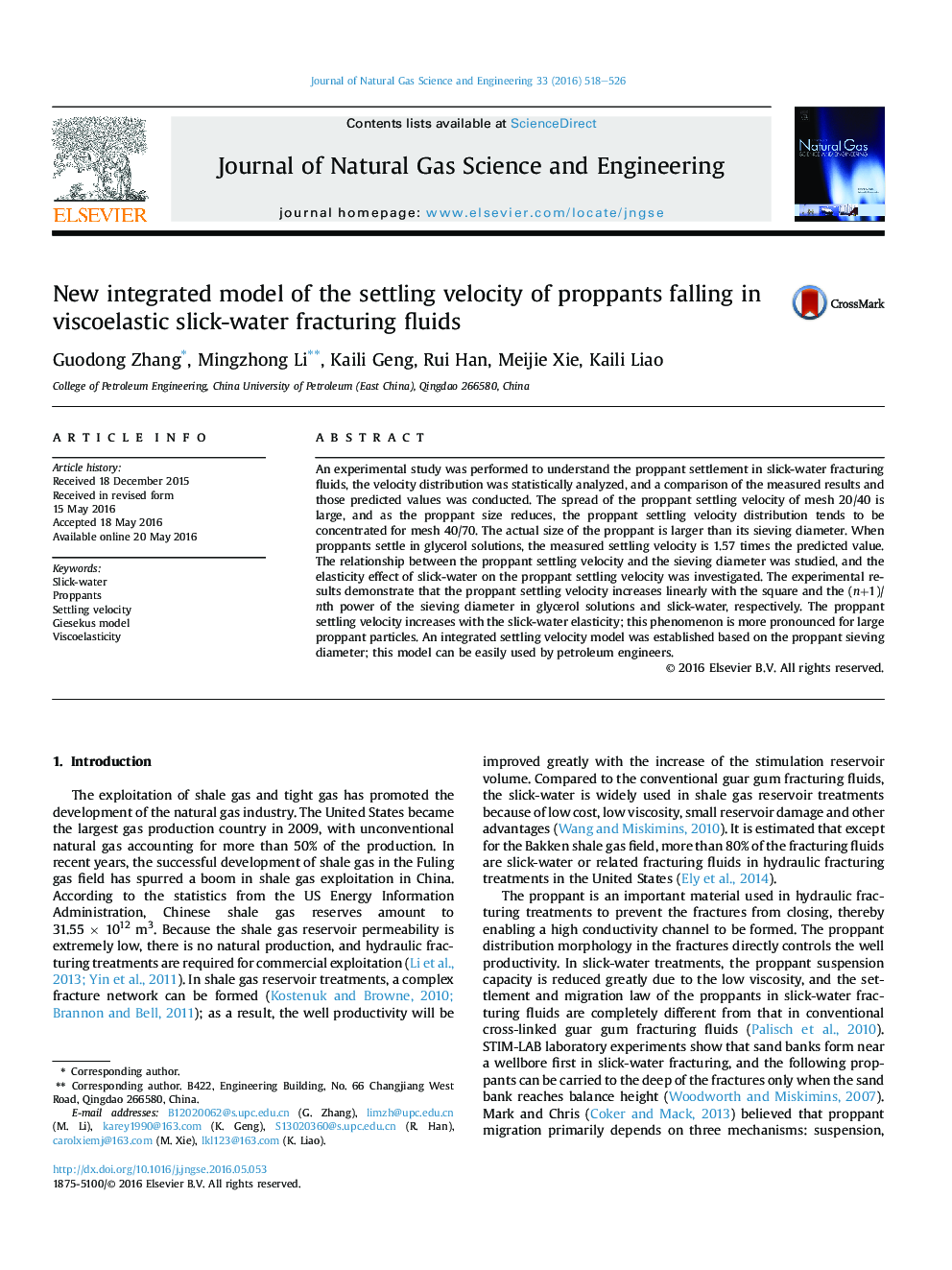| Article ID | Journal | Published Year | Pages | File Type |
|---|---|---|---|---|
| 1757089 | Journal of Natural Gas Science and Engineering | 2016 | 9 Pages |
•The actual size of the proppant is larger than its sieving diameter.•Proppant size grading should be considered in modeling proppant transport.•An integrated proppant settling velocity model was presented based on sieving diameter.•The elasticity of slick-water reduces the drag force of proppant particles.
An experimental study was performed to understand the proppant settlement in slick-water fracturing fluids, the velocity distribution was statistically analyzed, and a comparison of the measured results and those predicted values was conducted. The spread of the proppant settling velocity of mesh 20/40 is large, and as the proppant size reduces, the proppant settling velocity distribution tends to be concentrated for mesh 40/70. The actual size of the proppant is larger than its sieving diameter. When proppants settle in glycerol solutions, the measured settling velocity is 1.57 times the predicted value. The relationship between the proppant settling velocity and the sieving diameter was studied, and the elasticity effect of slick-water on the proppant settling velocity was investigated. The experimental results demonstrate that the proppant settling velocity increases linearly with the square and the (n+1)/nth power of the sieving diameter in glycerol solutions and slick-water, respectively. The proppant settling velocity increases with the slick-water elasticity; this phenomenon is more pronounced for large proppant particles. An integrated settling velocity model was established based on the proppant sieving diameter; this model can be easily used by petroleum engineers.
Graphical abstractFigure optionsDownload full-size imageDownload high-quality image (184 K)Download as PowerPoint slide
